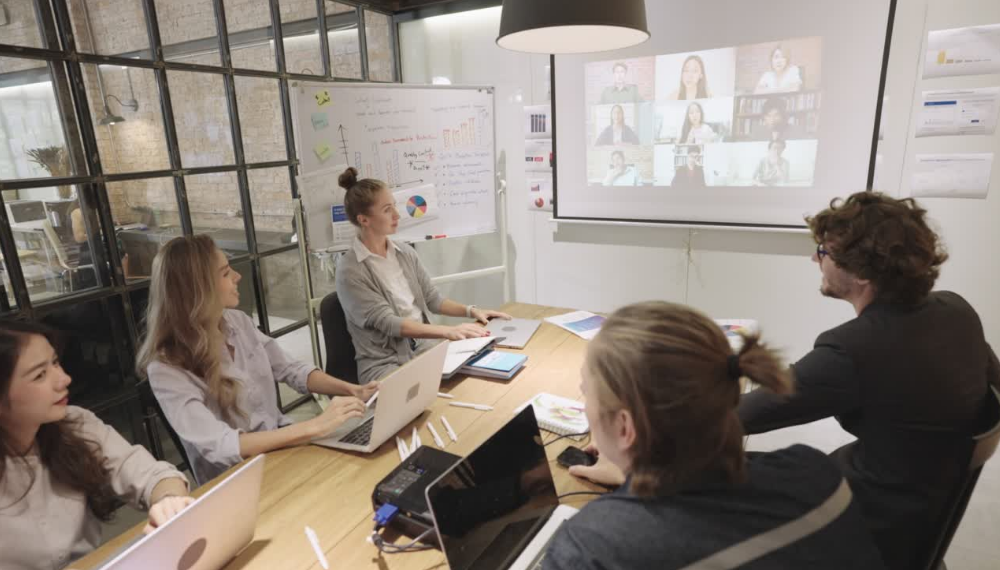With many employees still balking at returning to the traditional workplace at pre-pandemic regularity, professionals participating at a recent webinar sponsored by Office + SpaceIQ stressed the need for increased listening, empathy and flexibility.
 While workers, in large part, have demonstrated the capability of remaining productive in a work-from-home environment, there remain many advantages to returning to the workplace, including connectivity, collaboration and maintaining workplace culture. Presenters at the webinar – who all work with Slalom, a Seattle-based business and technology consulting – emphasized the importance of acting upon employee feedback after soliciting their input. The session was moderated by Mike Petrusky of iOffice + SpaceIQ.
While workers, in large part, have demonstrated the capability of remaining productive in a work-from-home environment, there remain many advantages to returning to the workplace, including connectivity, collaboration and maintaining workplace culture. Presenters at the webinar – who all work with Slalom, a Seattle-based business and technology consulting – emphasized the importance of acting upon employee feedback after soliciting their input. The session was moderated by Mike Petrusky of iOffice + SpaceIQ.
Earn the employee commute
“Employees regularly question why they are being asked to return to the workplace to perform heads-down activities that are easily conducted from their homes and that is a legitimate comment,” stated Charlotte Myland, Global Senior Direct for Slalom.
To demonstrate they are listening to their employees and showing empathy, employers need to “earn the employee commute” adds Heather Davis, Senior Organizational Effectiveness Consultant for Slalom.
“None of us are the same people we were two years ago as we have been impacted deeply and professionally from our workplace and personal experiences,” Davis said. “Employees just can’t just hit a switch and go back to what was considered normal. Companies that expect that, do so at their own risk. People will align with companies that are flexible, empower people to do their best work and show workplace flexibility.”
Ensure everyone is seen and heard
“People have become extremely comfortable where they are and questioning their return to the office, but at the same time, realize working from home long-term might not the represent the best place for them and their careers. So, a mindset shift is in order,” stated Charlotte Myland, Global Senior Direct for Slalom. “We cannot stress enough the importance of soliciting feedback from all stakeholders and, more importantly, taking action on the input.”
Myland explains that “no one size fits the situation of all employees” based on job responsibility and the demands from home, so “employers are encouraged to be empathetic and flexible.”
Natalie Richardson, Lead, HabLab, Future of Work Laboratory for Slalom, explains the importance of establishing an environment “where everyone is seen and heard.” She said it is extremely valuable to elicit employee input and honor them by implementing changes based on this feedback.
Richardson cited neuroscience research that compared the feelings of change to those felt in the grieving process. “In essence, when you are asking employees to make a change in their habits – such as returning to work – people tend to grieve over what they lost. In this instance, it is working from the comforts of their home.”
Return with purpose
“Interest among employees returning to work differs widely based on factors including age, job responsibilities and region, but they all want to believe they are coming back with a purpose,” explained Myland.
She added that sentiment and feedback is encouraging companies to establish schedules and corporate protocols to reflect the new normal. “For instance, some groups are deciding that Wednesdays are the one day per week in which everyone is expected in the office. And, for certain meetings, a video presence is not essential as there is a considerable amount of Zoom fatigue. The mental health and well-being of employees should be the top priority, especially since workers have demonstrated the proficiency to work from home, she added.
Companies are encouraged to design offices in response to the different ways their employees engage with the workplace. According to Richardson, this includes connection and socialization, collaboration and heads-down work activities. The group agrees that there is no replacement for employees interacting in traditional work environments, but companies need to react to the reality of new normal which includes hybrid work activities.
“It is about time that more organizations adopt a flexible work model, which, and here is the dirty secret, has actually been in existence for at least the last 20 years. It’s been cloaked with phrases such Agile Working, Activity Based Working, Flexible Working, Hoteling, Smart Working, Remote Working – the list is long,” said Kelly W. Ennis, Founding & Managing Principal, The Verve Partnership. “Those who’ve been forward-thinking enough to eliminate WAM (Walk Around Management) and consider these alternative models have thrived over years. This is and always will be the benefit of a solid workplace/placemaking strategy.